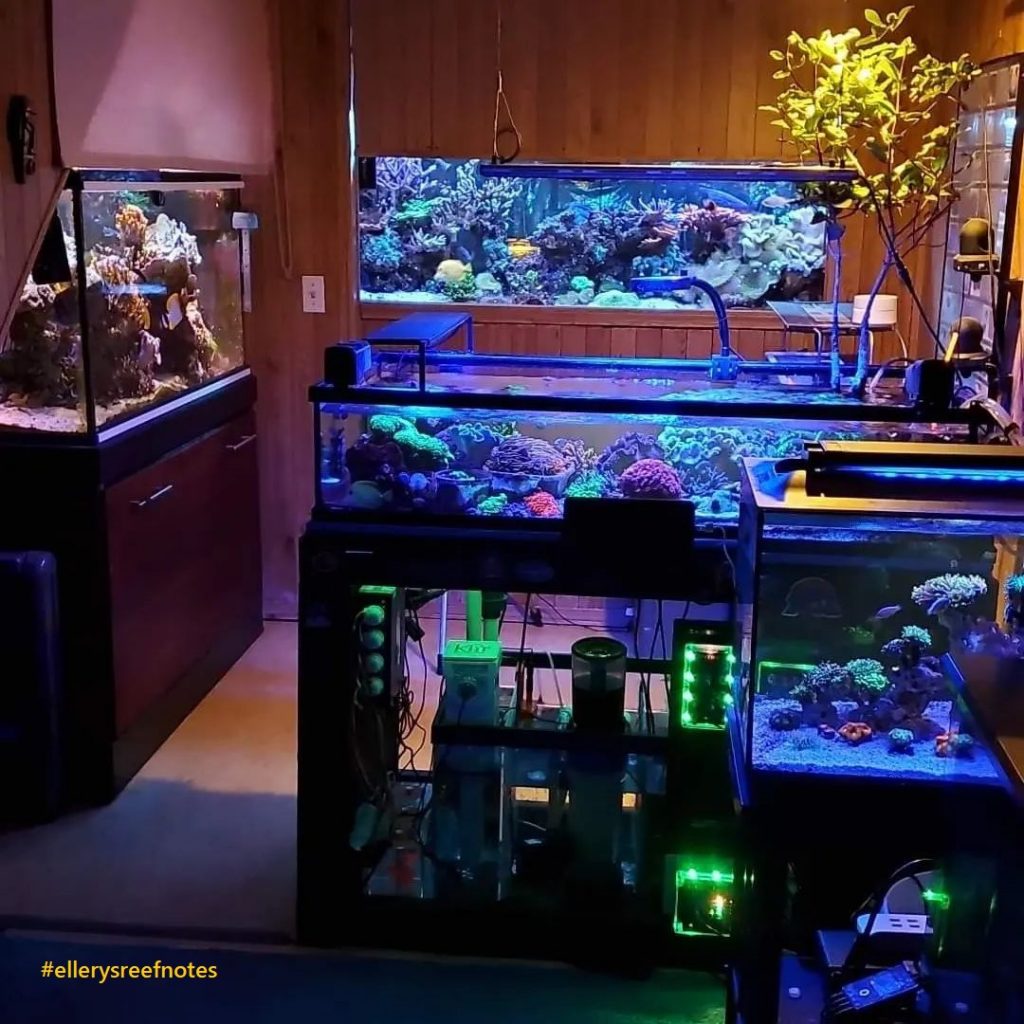
“Auto Water Changing” can be used in a hybrid manner. If you are becoming a reef addict and the number of aquariums you have is growing over time, you will ultimately want to simplify life by maintaining a single-system water parameter. Typically this is done by hard plumbing everything together, but requires a lot of work if not planned out initially.
Benefits
The primary benefit is to dilute the higher nutrients of the smaller tanks with the more stable larger water volume aquariums without permanent hard plumbing. Additional benefits :
- Water maintenance on the main system or dosing will also benefit all systems
- Maintains integrity of separate systems in case you need to isolate one
- Reduce carrying buckets to water change everything independently
- Reduce the tracking of multiple scenarios of water parameters, etc.
Case Study
In my case, I have a 7 tank system culminating in ~510 gallons of total system volume. I added a 50 gallon lagoon tank and a Nano-reef tank. These tanks were not plumbed in to the main system. They can each operate independently but now I have 3 unique systems to manage, which became difficult. I decided to standardize back to a single system. Each Auto Water Change system runs every hour with the adjacent larger system. For example, my 50 gallon lagoon swaps water with the main system and the Nano-reef swaps water with the adjacent lagoon.
Method
The Nano-reef uses an Auto Aqua AWC system, which has all the necessary components. To emulate the Auto Aqua AWC system, the 50 gallon lagoon tank uses the following:
- CoralVue Hydros Control 4
- 2 DC micro pumps (input, output)***
- matching flexible tubing
- Auto Aqua Smart ATO siphon breaker
- 2 water level sensors (high and low levels in the sump)
- Disable “auto top off” during this process.
*** If you are pumping long distances with large head height differences you will need stronger pumps and associated hoses and controllable outlets.
I programmed water changes to run every hour. The auto top off functions for the separate tanks were not needed in this case. The salinity of the system was maintained by the primary Auto Top Off.
Warning: Every system’s evaporation rate is different. Enable auto water top off as needed based on your environment.











Very informative and broken down is not as daunting as it sounded. For someone with multiple tanks it just makes sense and adds stability to the smaller more concentrated systems benefitting both the keeper and the inhabitants.
A picture of plan would be awesome die those that want to implement.
*for
Sure I’ll see if I can update this with a photo of what I have.